TH2BS11ph histone mark is enriched in the unsynapsed axes of the XY body and predominantly associates with H3K4me3-containing genomic regions in mammalian spermatocytes
- PMID: 31493790
- PMCID: PMC6731575
- DOI: 10.1186/s13072-019-0300-y
TH2BS11ph histone mark is enriched in the unsynapsed axes of the XY body and predominantly associates with H3K4me3-containing genomic regions in mammalian spermatocytes
Abstract
Background: TH2B is a major histone variant that replaces about 80-85% of somatic H2B in mammalian spermatocytes and spermatids. The post-translational modifications (PTMs) on TH2B have been well characterised in spermatocytes and spermatids. However, the biological function(s) of these PTMs on TH2B have not been deciphered in great detail. In our attempt to decipher the unique function(s) of histone variant TH2B, we detected the modification in the N-terminal tail, Serine 11 phosphorylation on TH2B (TH2BS11ph) in spermatocytes.
Results: The current study is aimed at understanding the function of the TH2BS11ph modification in the context of processes that occur during meiotic prophase I. Immunofluorescence studies with the highly specific antibodies revealed that TH2BS11ph histone mark is enriched in the unsynapsed axes of the sex body and is associated with XY body-associated proteins like Scp3, γH2AX, pATM, ATR, etc. Genome-wide occupancy studies as determined by ChIP sequencing experiments in P20 C57BL6 mouse testicular cells revealed that TH2BS11ph is enriched in X and Y chromosomes confirming the immunofluorescence staining pattern in the pachytene spermatocytes. Apart from the localisation of this modification in the XY body, TH2BS11ph is majorly associated with H3K4me3-containing genomic regions like gene promoters, etc. These data were also found to corroborate with the ChIP sequencing data of TH2BS11ph histone mark carried out in P12 C57BL6 mouse testicular cells, wherein we found the predominant localisation of this modification at H3K4me3-containing genomic regions. Mass spectrometry analysis of proteins that associate with TH2BS11ph-containing mononucleosomes revealed key proteins linked with the functions of XY body, pericentric heterochromatin and transcription.
Conclusions: TH2BS11ph modification is densely localised in the unsynapsed axes of the XY body of the pachytene spermatocyte. By ChIP sequencing studies in mouse P12 and P20 testicular cells, we demonstrate that TH2BS11ph is predominantly associated with H3K4me3 positive genomic regions like gene promoters, etc. We propose that TH2BS11ph modification could act alone or in concert with other histone modifications to recruit the appropriate transcription or XY body recombination protein machinery at specific genomic loci.
Keywords: Coimmunoprecipitation; H3K4me3 co-association; Immunofluorescence; Spermatocytes; TH2B; TH2B serine 11 phosphorylation.
Conflict of interest statement
The authors declare that they have no competing interests.
Figures
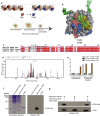
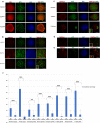
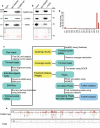
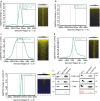

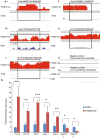
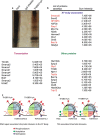
Similar articles
-
Linker histone variant H1t is closely associated with repressed repeat-element chromatin domains in pachytene spermatocytes.Epigenetics Chromatin. 2020 Mar 4;13(1):9. doi: 10.1186/s13072-020-00335-x. Epigenetics Chromatin. 2020. PMID: 32131873 Free PMC article.
-
The ubiquitin-conjugating enzyme HR6B is required for maintenance of X chromosome silencing in mouse spermatocytes and spermatids.BMC Genomics. 2010 Jun 10;11:367. doi: 10.1186/1471-2164-11-367. BMC Genomics. 2010. PMID: 20537150 Free PMC article.
-
Increased phosphorylation and dimethylation of XY body histones in the Hr6b-knockout mouse is associated with derepression of the X chromosome.J Cell Sci. 2007 Jun 1;120(Pt 11):1841-51. doi: 10.1242/jcs.03451. Epub 2007 May 8. J Cell Sci. 2007. PMID: 17488778
-
XY chromosomal bivalent: nucleolar attraction.Mol Reprod Dev. 2005 Sep;72(1):1-6. doi: 10.1002/mrd.20334. Mol Reprod Dev. 2005. PMID: 15915516 Review.
-
A Hypothesis: Linking Phase Separation to Meiotic Sex Chromosome Inactivation and Sex-Body Formation.Front Cell Dev Biol. 2021 Aug 16;9:674203. doi: 10.3389/fcell.2021.674203. eCollection 2021. Front Cell Dev Biol. 2021. PMID: 34485277 Free PMC article. Review.
Cited by
-
New Wenshen Shengjing Decoction Improves Early Embryonic Development by Maintaining Low Levels of H3K4me3 in Sperm.Biomed Res Int. 2022 Feb 21;2022:9775473. doi: 10.1155/2022/9775473. eCollection 2022. Biomed Res Int. 2022. PMID: 35237692 Free PMC article.
-
Linker histone variant H1t is closely associated with repressed repeat-element chromatin domains in pachytene spermatocytes.Epigenetics Chromatin. 2020 Mar 4;13(1):9. doi: 10.1186/s13072-020-00335-x. Epigenetics Chromatin. 2020. PMID: 32131873 Free PMC article.
-
Genome-wide occupancy reveals the localization of H1T2 (H1fnt) to repeat regions and a subset of transcriptionally active chromatin domains in rat spermatids.Epigenetics Chromatin. 2021 Jan 6;14(1):3. doi: 10.1186/s13072-020-00376-2. Epigenetics Chromatin. 2021. PMID: 33407810 Free PMC article.
-
Epigenetic landscape of testis specific histone H2B variant and its influence on sperm function.Clin Epigenetics. 2021 May 1;13(1):101. doi: 10.1186/s13148-021-01088-4. Clin Epigenetics. 2021. PMID: 33933143 Free PMC article.
References
-
- Pradeepa MM, Rao MR. Chromatin remodeling during mammalian spermatogenesis: role of testis specific histone variants and transition proteins. Soc Reprod Fertil Suppl. 2007;63:1–10. - PubMed
Publication types
MeSH terms
Substances
Grants and funding
LinkOut - more resources
Full Text Sources
Molecular Biology Databases
Miscellaneous

